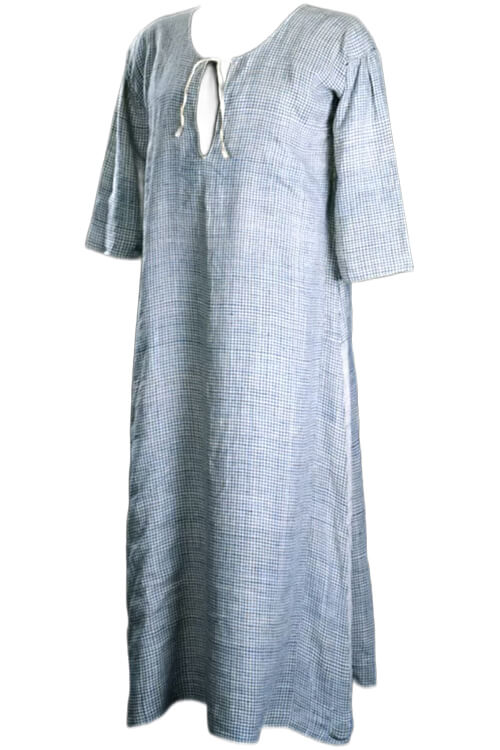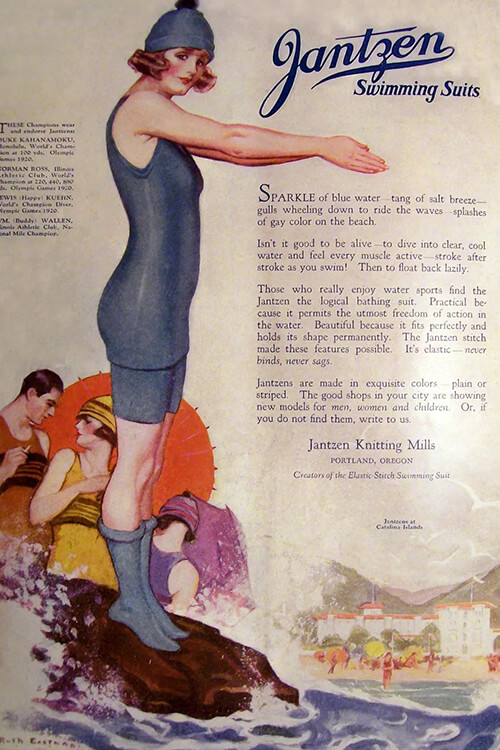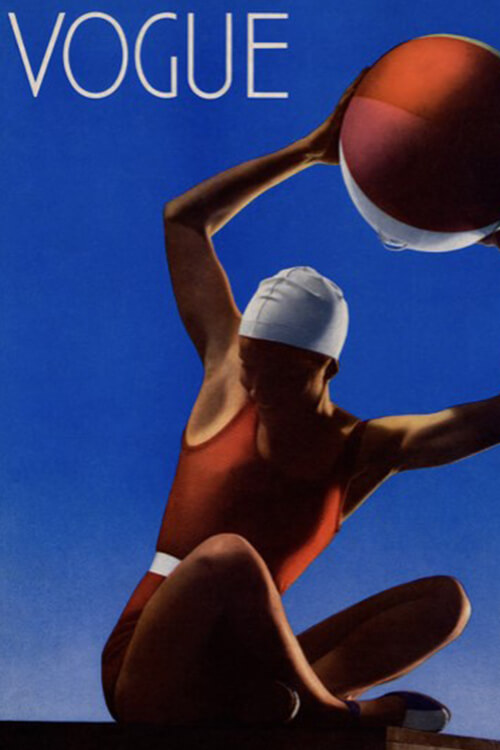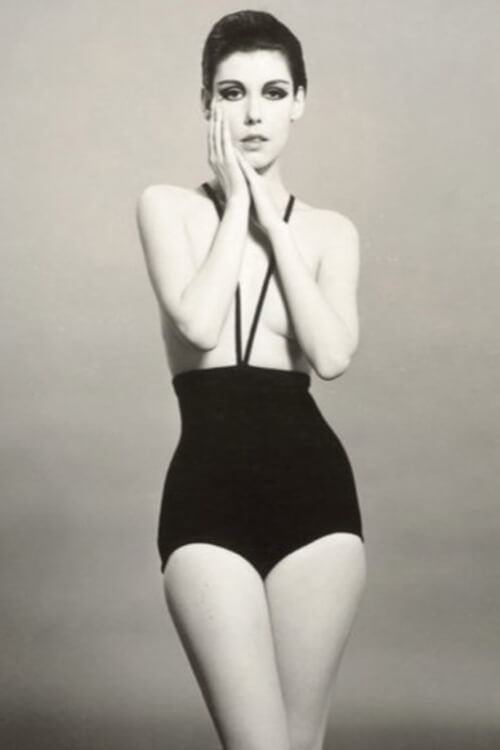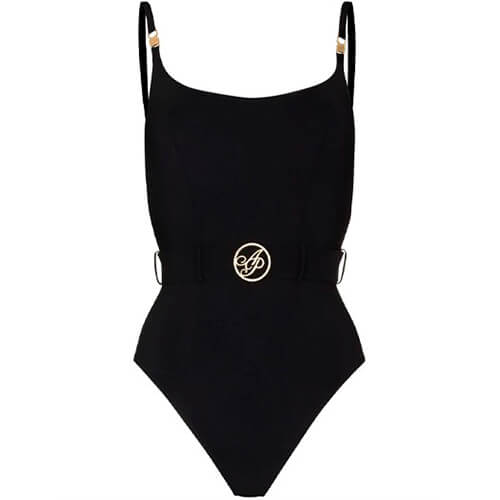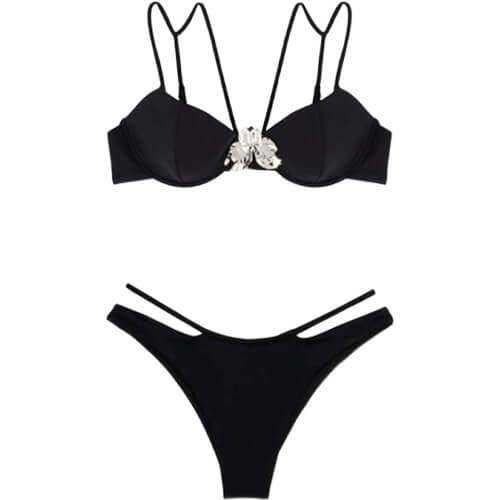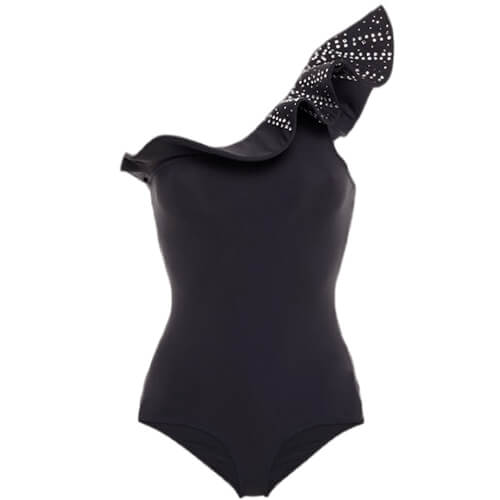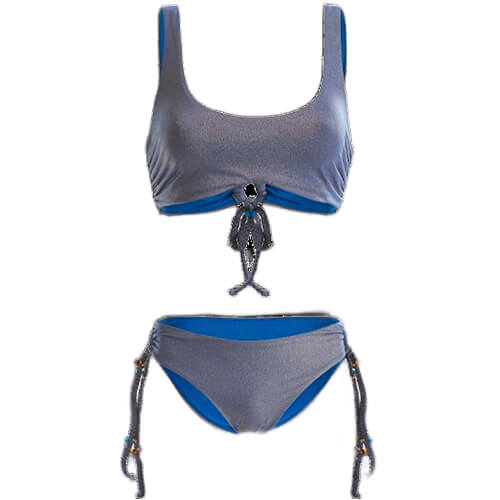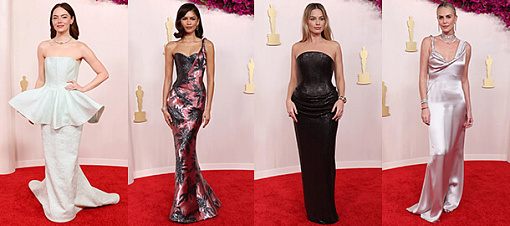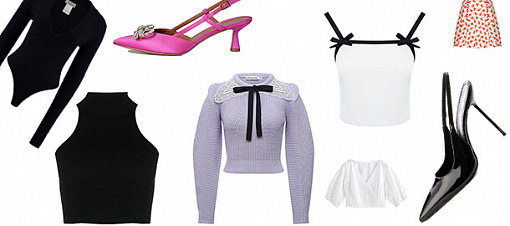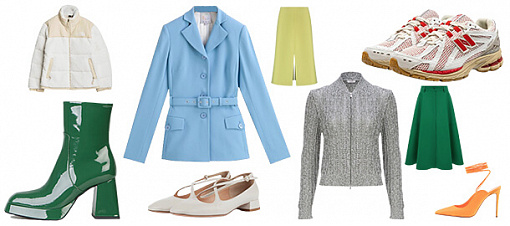It's fascinating to see how women's swimwear has changed throughout time and how this evolution closely reflects the history of women's independence. Let's take a closer look at history using a brief timeline to learn more about how the key piece of the ladies' vacation wardrobe first arose and evolved.
18TH CENTURY
Swimming in the sea became a popular form of leisure in the eighteenth century. Bathing in the sea was thought to have considerable health advantages, so both men and women were encouraged to do so. However, being completely submerged in water was not recommended. This was especially crucial for women because being active in the water was not considered feminine enough. Women bathed in loose, open dressing robes that resembled shirts.
The swimming suit in the image below dates back to 1767 and belonged to Martha Washington, wife of George Washington, leader of the Continental Army, and ultimately the first President of the United States. Small lead weights are sewed inside the dress's four quarters, right above the hem. This was done to prevent the garment from drifting in the water, allowing ladies to keep their modesty.
Самый первый купальный костюм
19TH CENTURY
The popularity of water sports as a form of enjoyment rather than as a health therapy increased in the 19th century, making bathing suits a little more comfortable, although they still had several disadvantages.
The swimming outfit included a bathing dress, panties, and stockings, which were frequently made of wool or cotton. When wet, these materials grew heavy and were barely fit for intense physical activity. In this instance, it is possible to say that women's swimwear, which prohibited easy mobility in the water, mirrored and reinforced the social and physical limitations placed on women in the patriarchal society of the 19th century.
Women frequently utilized bathing machines to enter and exit the water during the Victorian era, which was noted for its rigorous moral standards. Horses would drag bathing devices in and out of the water. These wheeled bathing machines resembled small cottages and offered a private changing area for ladies to use before diving into the water.

BATHING MACHINES
At the end of the Victorian era, the so-called "princess costume" rose in popularity as a substitute for swimsuits for ladies. The blouse and the pants were joined together to form a single piece. Women wore skirts that hung mid-thigh, deflecting focus away from their body shape. Typically, the clothing was in dark hues, making it difficult to determine whether it was damp. The suits were ineffective because they were heavy when wet and limited arm movement.
Future women's swimwear will undergo a huge transformation as a result of the princess suit. The princess outfit, undoubtedly, marked the birth of the female one-piece swimsuit. First, by the 1890s, the princess costume's pants had become short enough to hide them behind the skirt. Because flannel became too heavy when wet, twill and other knit fabrics were used instead.

1900-1945
Women's swimwear saw considerable modifications in the twentieth century as a result of material progress and increasingly liberal fashion trends.
For example, at the 1912 Olympics, women were allowed to compete in swimming for the first time.
Regarding the swimsuits themselves, the Jantzen Company, formerly known as the Portland Knitting Company, was a major producer of swimwear in the 1910s. Jantzen initially made so-called "wool suits" for rowing clubs. As a result of their enormous success, Jantzen put them on the market for a larger clientele. It's interesting to note that Jantzen did not refer to this outfit as a swimsuit until 1921.
Купальник Jantzen, 1921 год
In 1914, Speedo, an Australian garment manufacturer, began experimenting with swimsuits. Swimwear was the same for both men and women — the top was usually short-sleeved or in the form of a vest, and the pants were long. While social changes were well underway, the commercial sector was behind. As a result, both Jantzen and Speedo sold unisex swimwear throughout the 1910s.
After the First World War, swimsuit fashions started to vary across continents. Women wore knit swimsuits instead of bathing suits in America and Europe. At the same time, European women favored swimsuits that fitted closely to the body, while American women preferred a practical and sporty look. Another significant distinction between the two fashion trends was that women's swimsuit fashion in America was accessible to a large middle class, but in Europe there was a clear class split in what ladies could and could not afford to buy to go out to the beach. A wealthy woman could stand out by wearing a silk jersey bathing suit rather than a knitted one.
Around the same time, swimwear began to emerge in magazines as fashion clothing, and many fashion designers began to rethink women's swimwear in their own unique style. Coco Chanel designed a unisex one-piece swimsuit, and it became fashionable as a result of Chanel's interest in swimwear. Swimwear was also available in Lanvin, Molyneux, Schiaparelli, and Poiret boutique stores.
1920S VOGUE COVER
It is significant to note that by the end of the 1920s, tanned skin had stopped being a characteristic of the working class and had instead become trendy and a sign of leisure and wealth. Elsa Schiaparelli invented a backless swimsuit with an integrated bra in 1932 to prevent tan lines from the straps of the swimsuit while sunbathing.

A SWIMSUITE INVENTED BY ELSA SCHIAPARELLI
The invention of the bikini in 1946 was a turning point in the history of women's swimwear. The bikini design is the work of two separate designers who released the revolutionary piece of clothing at the same time. In May 1946, Jacques Heim, a French fashion designer, invented the Atome, a minimalist two-piece swimsuit. This swimsuit was made up of a bra-like top and a bottom that covered the buttocks and navel. Later that year, in July 1946, an engineer-turned-designer named Louis Reard invented the bikini. Reard's minimal design consisted of only four triangles of cloth bound together with rope. The two designs fought for public attention, and while Heim's outfit was the first to be worn on the beach, Reard's word "bikini" remained.

LOUIS REARD'S SWIMSUIT
The growth of the movie business and Hollywood glamour, which praised the female body in all its beauty, had a significant effect on the swimsuit industry. Brigitte Bardot was featured in the 1952 French movie "Manina, the Girl in the Bikini." At 17 years old, Bardot was one of the first women to appear on the big screen in a bikini. In 1956's "And God Created Woman" Bardot made a comeback wearing a bikini. Thus, the bikini ultimately stopped being viewed as something shocking by the general public and started to gain popularity.
RUDI GERNREICH'S MONOKINI
Throughout the second half of the 20th century, designers kept experimenting with swimsuits. In the 1960s, brands like Calvin Klein, Giorgio Armani, Oscar de la Renta, Emanuel Ungaro, and André Courrèges started producing ready-to-wear swimwear. Designer Rudi Gernreich introduced his renowned monokini in 1964. The monokini was the first topless outfit and included a tight, high-waisted bottom with straps and a cutout. Gernreich's monokini therefore contrasted modesty with sensuality.
Women's swimwear evolved toward being more flamboyant and daring towards the end of the 20th century, mirroring current fashion trends. The most popular swimwear was still bikinis and swimsuits, but they now included high cutouts and strapless bikini tops.
21ST CENTURY
Due to the cyclical nature of the fashion industry, several 20th-century styles in women's swimwear were updated in the 2000s. Swimwear from the 1950s, high-cut swimwear from the legendary Baywatch show, and tiny bikinis are frequently seen on the same beach. In addition to being practical apparel, women's swimwear continues to be an independent fashion item. Little has changed in terms of shapes for women's swimwear in the twenty-first century, but companies are starting to pay more attention to size distinctions. Slowly but surely, the urge to look a specific way in a bathing suit is fading. Just as the twentieth century worked to eliminate the laws that restricted female modesty, maybe the twenty-first century will see the emergence of women's swimwear as a weapon for emancipation from the standards of beauty that had been imposed by previous decades.

